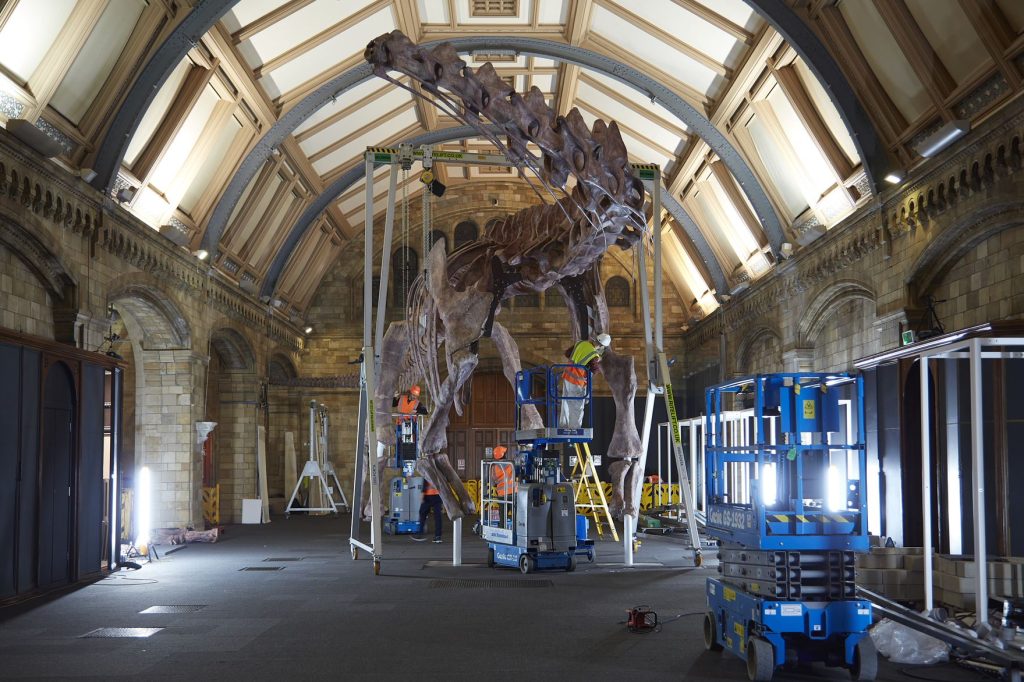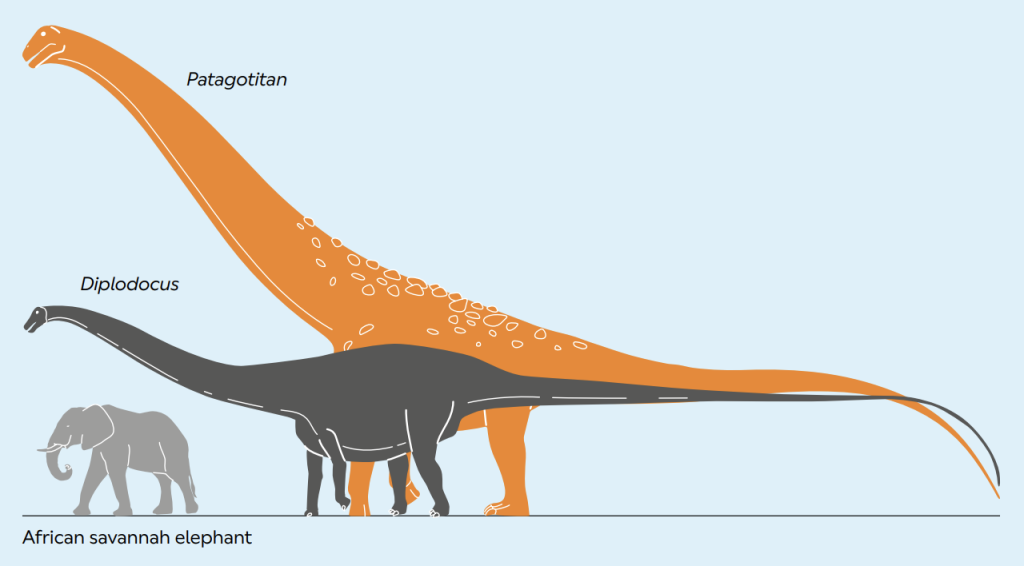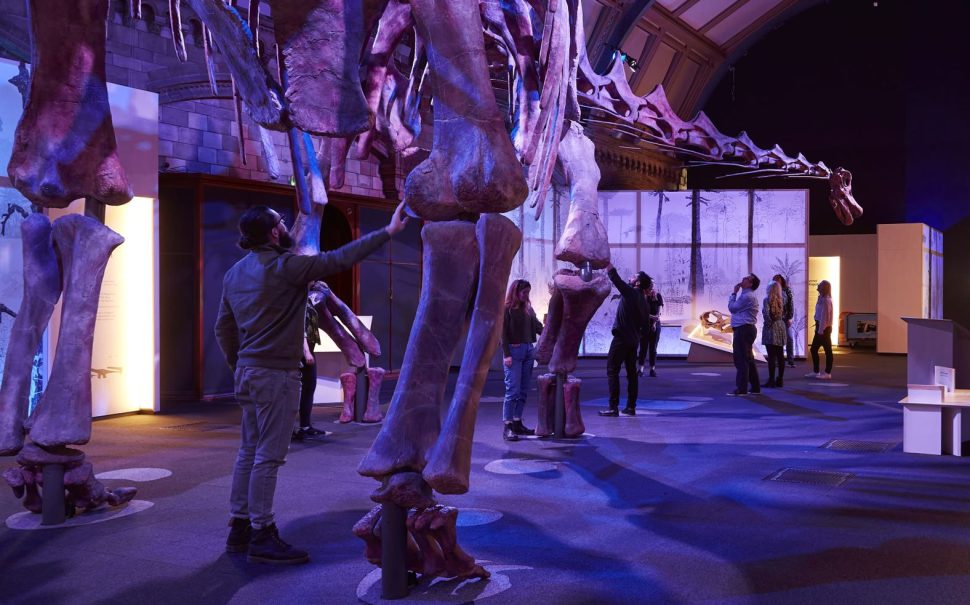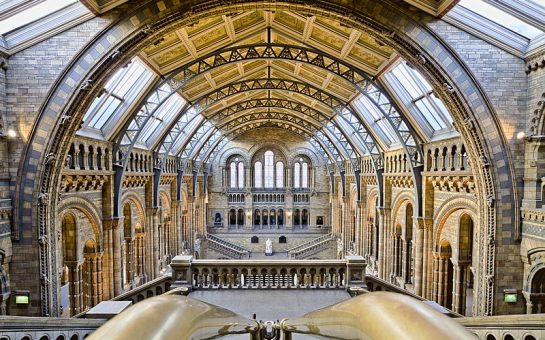An exhibition of a titanosaur, a species of dinosaur thought to be the largest known animal ever to walk the Earth, began at the Natural History Museum today.
The Patagotitan mayorum was discovered by a farmer in Patagonia, Argentina, who spotted its femur poking out of his field in 2010, 101 million years after it is thought to have died.
It is one of 80 types of dinosaurs in the titanosaur species, all sauropods – long-necked, herbivores – though not all as large as the Patagotitan mayorum.
The interactive exhibition allows visitors to feel the Patagotitan’s cast and explore the realities it would have experienced, including the types of ferns and tree tops that made up its 120kg daily diet.

Director of Public Programmes Dr Alex Burch said: “Since the term dinosaur was coined back in 1842 by the founding Director of the Natural History Museum, these ‘terrible lizards’ have captured the imaginations of children everywhere.
“Throughout the exhibition we explore how these relatively unknown dinosaurs were able to exist at such an astonishing size and hope visitors will revel with the childlike delight that comes with standing next to a creature like Patagotitan.”
Weighing in at 534 domestic cats (2.67 tonnes) and measuring nine London fire engines long (37 metres), visitors can step inside the Patagotitan’s heart to discover how it pumped blood throughout its gigantic body and understand how its lungs breathed air down such an enormous neck.
However, the actual living animal, flesh and all, is thought to have weighed around 57 tonnes, nine times heavier than an African savannah elephant, today’s largest animals.

Director of the Natural History Museum Dr Doug Gurr said: “The large animals that we share the planet with today continue to play vital ecosystem roles – from elephants and rhinos to blue whales – but they are increasingly at risk of extinction from habitat loss and other devastating human impacts.
“We must connect the next generation with the natural world to protect the large animals of today before it’s too late.”
The depth of insight provided by the National History Museum might prove alarming for some, however, with the exhibition including an opportunity to smell the titanosaur’s poo.
Titanosaur: Life as the biggest dinosaur is on display at the National History Museum until 7 January 2014. Tickets on sale here.




